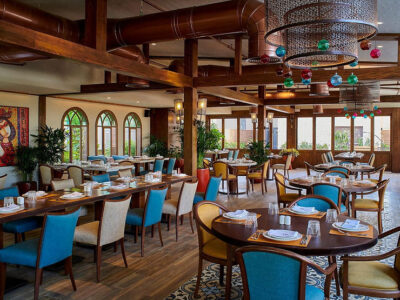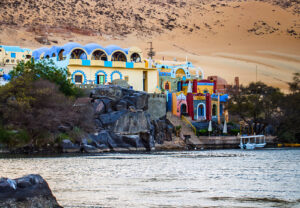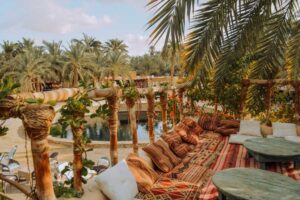Most people who visit Aswan in Upper Egypt do it as part of an all-inclusive Luxor & Aswan Nile cruise, with a guide hustling you along from point A to point B: see this, look at that, take a picture, tip the guard, on to the next.
And while it’s admittedly relaxing to let someone else do all the planning and organizing and transporting you from here to there, seeing the town on your own allows you to spend more time doing what really interests you, and skipping what doesn’t particularly float your boat (felucca in this case. Sorry, Egyptian dad joke).
So if you’re interested in exploring Aswan on your own time, here are the best things to see and do:
1. Philae
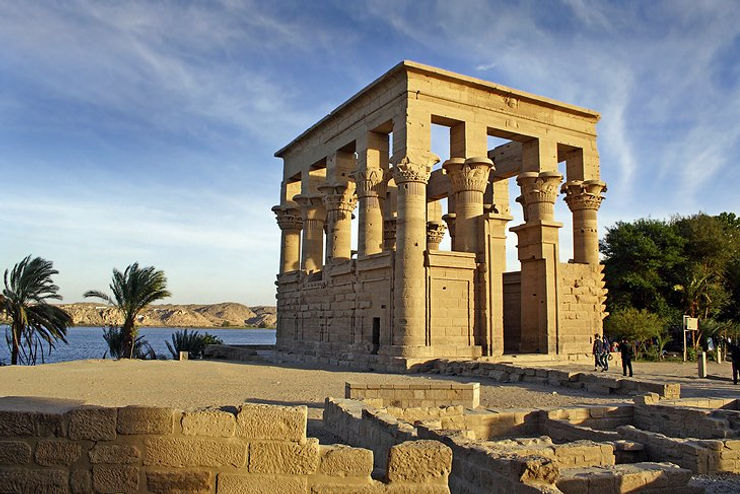
Philae is a temple complex on the Nile island of Agilkia, built during Ptolemaic times and finished during the Roman conquest. It’s known for being the last place where hieroglyphs were written, and the last place where the Ancient Egyptian religion was practiced. Christianity became present in Philae starting the 4th century, where it first was practiced alongside the Ancient Egyptian religion and then solely. Today you can see both the original Ancient Egyptian temples and the temples that were converted into churches.
Another interesting fact about Philae is that it wasn’t always chilling on Agilkia Island — it was actually dismantled, moved and reassembled by UNESCO to save it from the flooding of the Nile from 1960 to 1980 due to the Aswan High Dam. It’s now a UNESCO World Heritage Site, alongside Abu Simbel, below.
For more UNESCO World Heritage Sites in Egypt, head here.
2. Abu Simbel
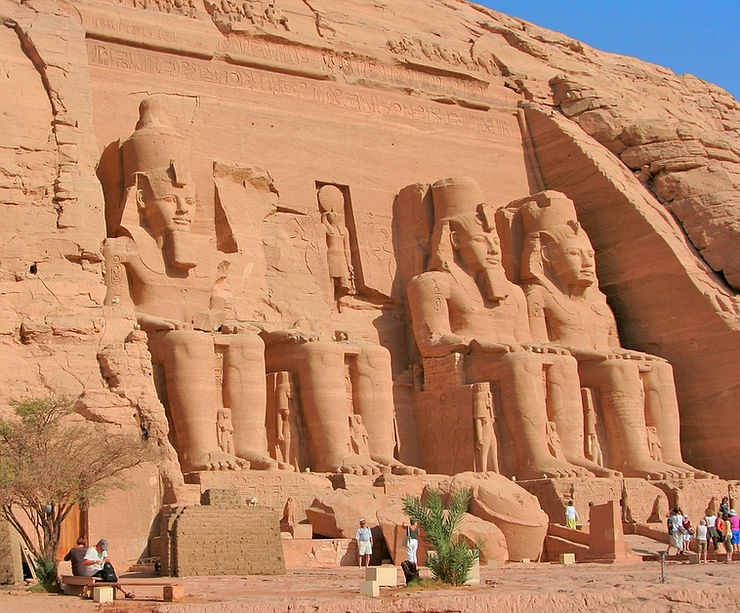
The Great Temple at Abu Simbel
Speak of the devil. Abu Simbel, like Philae, was relocated and saved from the Nile. And when you see the ginormity of the monument, the fact they were able to do that is almost as awe-inspiring as the monuments themselves.
Abu Simbel is actually two massive temples — the one you see in all the pictures is the Great Temple dedicated to the gods and Ramses II, and the Small Temple is dedicated to the goddess Hathor and Nefertari, the Great Wife of Ramses II. The Abu Simbel temples are known to be some of the most beautiful temples in Egypt.
Before you get too excited though, there’s some bad news. Abu Simbel is actually quite a ways from central Aswan, about a 3 hour car ride, and you can’t attempt it by yourself because security forces don’t want tourists driving lost in the remote southern desert. Have either your hotel or a tour agency arrange a car and driver for you.
Read more: 12 Most Impressive Ancient Egyptian Temples Still Standing Today
3. Nubian Village
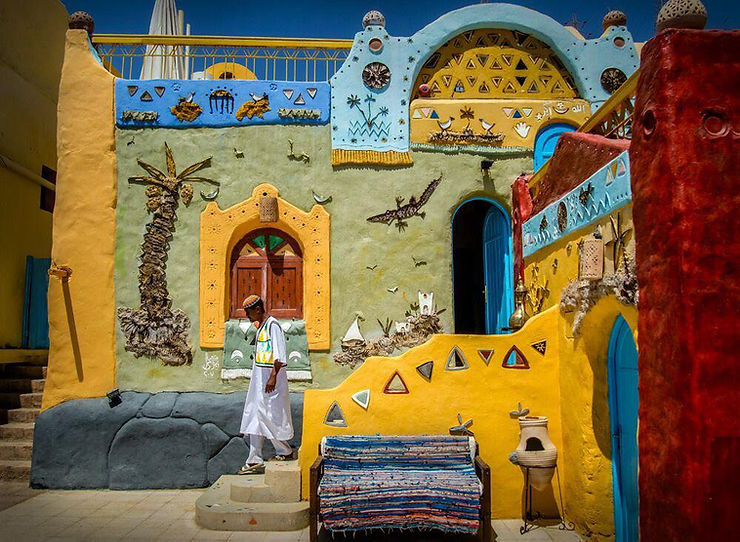
What makes Aswan different from the rest of Egypt is its strong Nubian culture, which is apparent in the architecture, art and even the language of Aswan natives (they speak a mix of Arabic and Nubian that even other Egyptians can’t understand).
The Nubian Village in Aswan is a beautiful place to walk around and see the symbolically painted houses and murals — and it’s also a market of sorts, with handcraft shops and vendors galore. You can find everything from handwoven scarves to local spices to handmade jewelry.
Local note: please don’t give money to anyone who wants to show you live crocodiles or let you hold baby ones, because they’re kept in really horrible conditions. Please support the Nubian Village in other ways, like by buying their handicrafts.
4. Nubian Museum

So you got the look and feel of the Nubian Village (and probably a lot of souvenirs), but how about actually learning about the history and culture? Nubians hail from southern Egypt and northern Sudan, and their history is as old as Ancient Egypt’s. The preservation of Nubian culture is extremely important, because the heartland of Nubia was destroyed due to the flooding of the Nile.
The museum tells the story of Nubia from its start as a prehistoric Nile Valley civilization, through the pharaonic era and introduction of Christianity and Islam to Egypt, up to the building of the Aswan High Dam in the 1960s.
For more important museums in Egypt, head here.
5. Day Trip to Lake Nasser
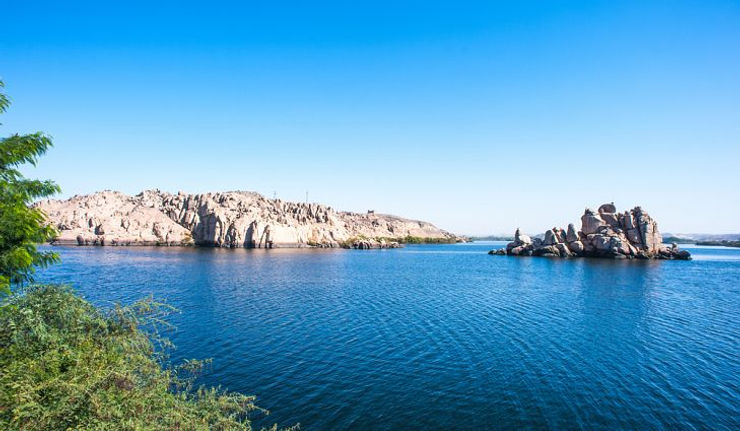
South of the Aswan High Dam is Lake Nasser, one of the largest manmade lakes in the world, created after the dam was built. This massive reservoir is home to more wildlife than villages, so it’s easy to forget that anyone else exists when you’re in the middle of the enormity of the lake.
There are cruises that take you around the lake, or you can arrange a day trip through your hotel or tour agency. If you’re the DIY type, you can also arrange with a local boatman in Aswan to take you down for a day in a motorboat.
Lake Nasser is dotted with ancient monuments around its shoreline, and fishing is allowed in parts of the lake (you can fish from both the shore and your boat). Nile Perch is a type of prized fish found in Lake Nasser, and the lake is also one of the last safe havens for the Nile crocodile.
6. Temple of Kalabsha
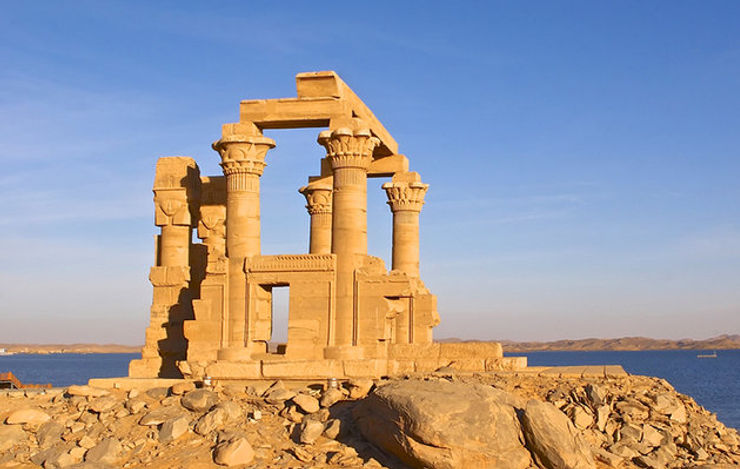
Speaking of Lake Nasser, one of its most famous monuments is the Temple of Kalabsha. It was originally built during Roman times, around 30 BC, over an earlier sanctuary built by Amonhotep II. Kalabsha was built as a shrine to Mandulis (Merul), an ancient Nubian sun god. When Christianity made its way to Aswan, the temple was converted to a church.
Kalabsha is the second biggest monument after Abu Simbel to be moved from its original location to save it from the Nile flooding after the dam’s construction.
7. The Old Cataract Hotel
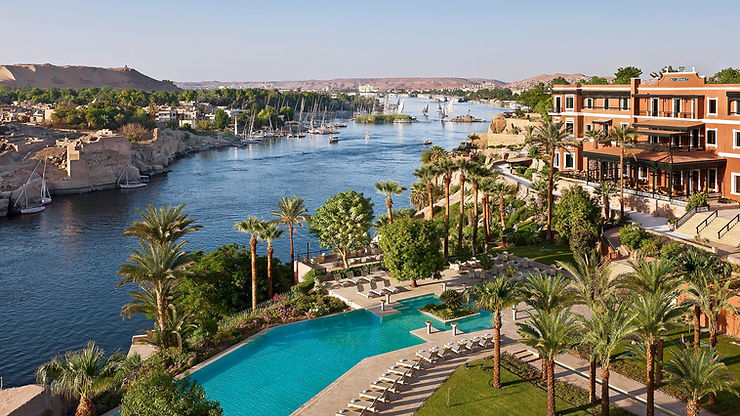
This world-famous hotel was built in 1899 by Thomas Cook and Sons, after the Cairo-Aswan railway was built in 1898 and there was a sudden influx of visitors and and not enough hotels. They bought nine feddans from the government and hired architect Henri Favarger, the same architect who designed the famous Mena House in Cairo.
It was an instant hit and quickly garnered a lot of famous guests over the years, including Tsar Nicholas II, Winston Churchill and Princess Diana. It became literally the stuff of ‘legends’ as its current name suggests, when Agatha Christie used it as the backdrop for her famous novel, Death on the Nile. The 1978 movie they made out of the book was shot there too (so was the famous Egyptian TV series ‘Grand Hotel’).
It’s now known as the Sofitel Legend Old Cataract Hotel, and you can reserve a spot in their Nile-side restaurants to have a drink or meal.
For more historical hotels in Egypt you can stay at until today, head here.
8. Unfinished Obelisk
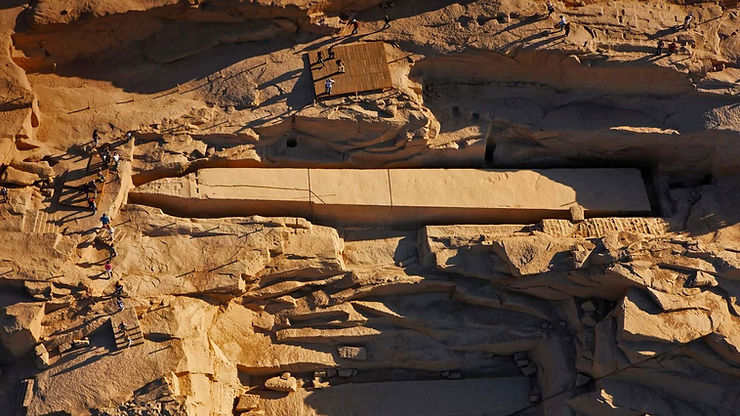
The Unfinished Obelisk is the largest obelisk built in Ancient Egypt, and if it had been completed it would’ve reached 42 meters (around 137 feet), which is one third larger than any other existing obelisk.
Commissioned by the female pharaoh Hatshepsut, it was carved out of bedrock in a stone quarry, but cracks appeared in the granite during its construction, leading to its abandonment.
You can still see it in its original quarry, giving interesting insight into the stone-working techniques of the Ancient Egyptians.
9. Qubbet el Hawa (Tombs of the Nobles)

A necropolis of tombs spanning the Old, Middle and New Kingdoms, belonging to Ancient Egyptian officials and nobles. The tombs are on varying levels of a hilltop, with a domed tomb of an Islamic sheikh on the very top.
It’s still an active excavation site, so who knows what else will be found there in the future. The tombs which are allowed public access rotate, but the most celebrated tombs there belong to Harkhuf, Sarenput II and Sabni.
Reaching the top of the hill is a bit of a trek, but it’s also home to some of the very best views in Aswan.
You might also like: 8 Best Ancient Egyptian Tomb Sites in Modern Egypt
10. Elephantine Island

Temple of Satet
This island used to be the Ancient Egyptian city of Abu, which translated to ‘elephant’. The first temple built on the island was around 3,200 BC (around 5,200 years ago), and it was a temple for Satet, a goddess personified as the Nile inundation.
Elephantine was also known in the Ancient Egyptian religion as being the home of Khnum, the ram god who watched over and controlled the Nile waters. Around 3,500 years ago Elephantine became a fort that marked the southern border of Egypt.
Today Elephantine Island is home to some ruins, but most people enjoy seeing the Nubian homes there and Animalia, a Nubian home turned museum and B&B.
11. Botanical gardens on Kitchener’s Island
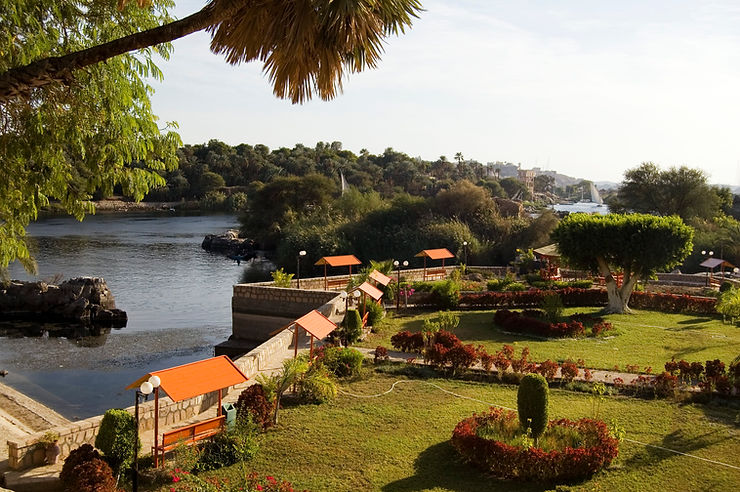
British Lord Kitchener (1850-1916) was gifted this small Nile island as thanks for his military prowess in Sudan. He built a house and turned the whole island into a botanical garden, importing plants from as far as Malaysia and India. He was fluent in Arabic and is said to have preferred the company of the Egyptians over the British.
The island is called Geziret el Nabatat in Arabic (‘island of the plants’). You can enjoy walking through the exotic trees and plants (closed on Fridays).
12. Day trip to Kom Ombo and Edfu
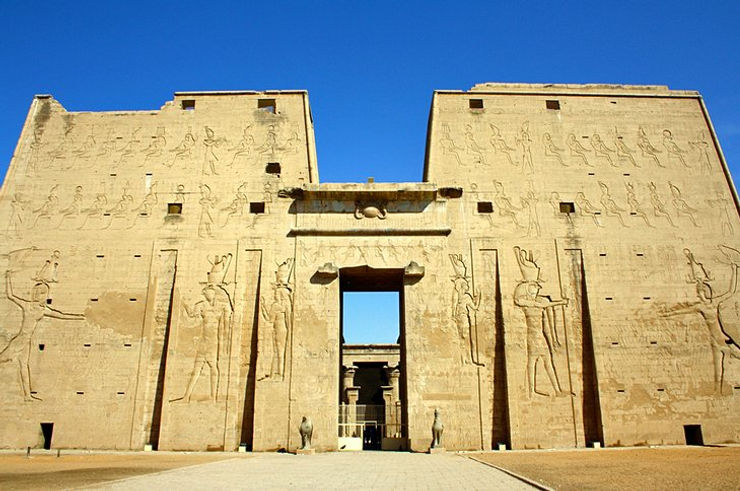
Temple of Horus at Edfu
It’s customary to see the temples of Kom Ombo and Edfu on Luxor-Aswan cruises (the temples are on the Nile between the two cities), but just because you skipped the cruise doesn’t mean you have to skip seeing two of Egypt’s most impressive temples.
Granted, it’s a long drive (an hour to Kom Ombo and then another 2 hours to Edfu) but it’s definitely worth it.
Kom Ombo is an unusual double temple built in the Ptolemaic times, and 300 crocodile mummies were found there (in the adjacent Crocodile Museum).
The Temple of Horus at Edfu is also a Ptolemaic shrine, and one of the best-preserved temples in Egypt — it’s nearly intact.


